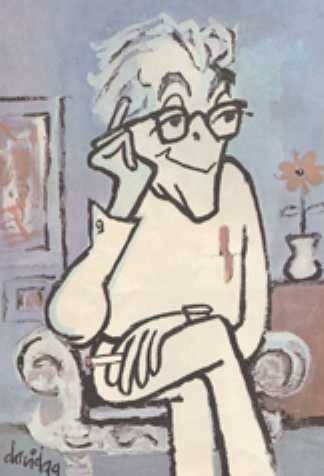4.1.1.19.1 The first poetic incursions of Félix Pita Rodríguez (1909 – 1990)

Félix Pita Rodríguez’s poetic work began in the literary supplement of the Revista de la Marina and also in the Revista de Avance, fully embracing the principles of the avant-garde, which was emerging in the nation’s lyrical scene at the time.
During his trip to Paris in 1929, he came into contact with Surrealism and was influenced by poets from the epoch and genesis of this movement, including Villon, Blake, and Lautréamont, among others. However, he did not exclusively worship this aesthetic creed, and a neo-Romantic sensibility is always evident in the interweaving of symbolism with which he expresses the flow of the unconscious.
Pita Rodríguez does not intend to exorcise from his poetry the strong emotional charge given largely by republican frustration, from which the poet’s feeling of emptiness and a solitude that can be said to be inherent is strengthened, the estrangement before a reality in which he does not feel completely immersed and therefore becomes an unreal entity in its sphere, a degree of alienation of which he becomes aware and tries to escape from it in spirals that lead him to greater bewilderment and paradoxically to poetic regions not trodden by our bards.
The humorous note constitutes another way the poet finds to lighten the burden of ideals that constantly collide with reality. This somehow connects with the choteo and its sense of escape from the social situation, but with a tone that is not exclusively Creole. This alternative, and in a broader sense, the choteo, constituted the only means of psychological survival in a context perceived as immutable.
According to Roberto Fernández Retamar, it is the “expression of a pure emotional flow, close to surrealism, in which there is no rapprochement of two realities, as evidenced by the metaphor, but rather a new and arbitrary organization resulting from letting go of the moorings of reason.”
This poetics, on the reverse side of the rational and with a structuring that is partly that of the unconscious but without breaking the barriers of consciousness, the poet’s watchful eye on the revelation of his own abyss, was even described as “pure nonsense” by Juan Marinello, when he delved into a poetic ordering that responded to its own logic, the result of the assimilation of diverse but integrated cognitive and aesthetic sources.
This bard’s inquiries are not only psychological; he cares about the poetic word per se, in tune with the avant-garde. Beyond the content attributed and accepted by social convention, he is interested in the phonetic as a direct expression of meaning: the onomatopoeic. He already uses synesthesia and other resources that intensify the sense of another reality, all of which converges in a poetic cosmos that is difficult to understand and that has been singular since its beginnings, with practically no followers in later generations.








